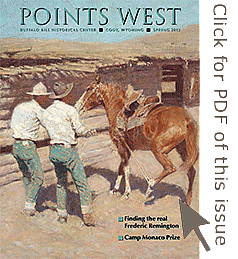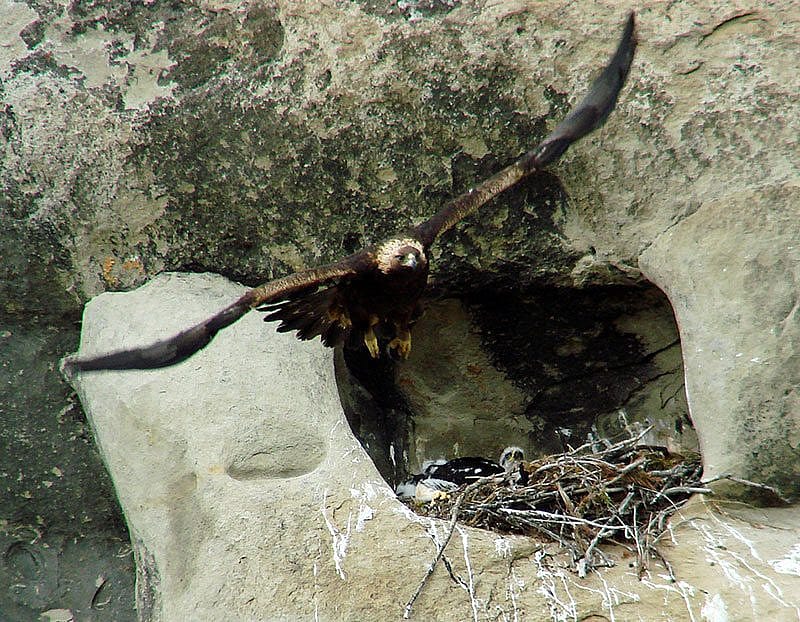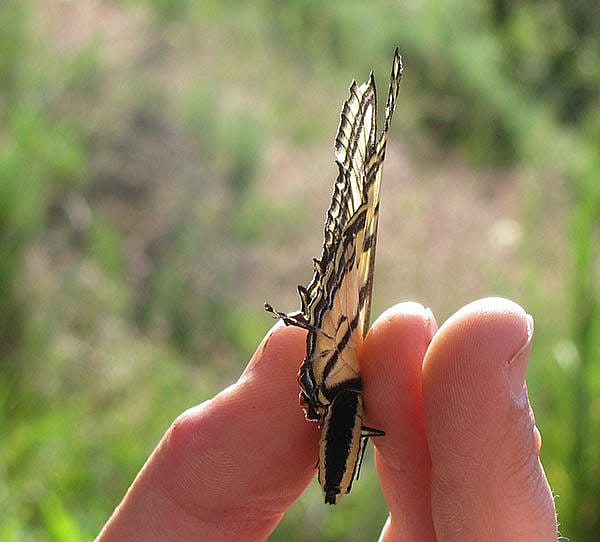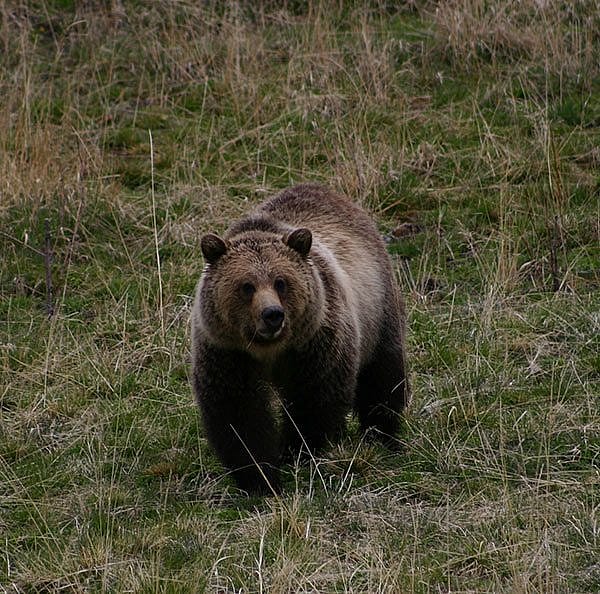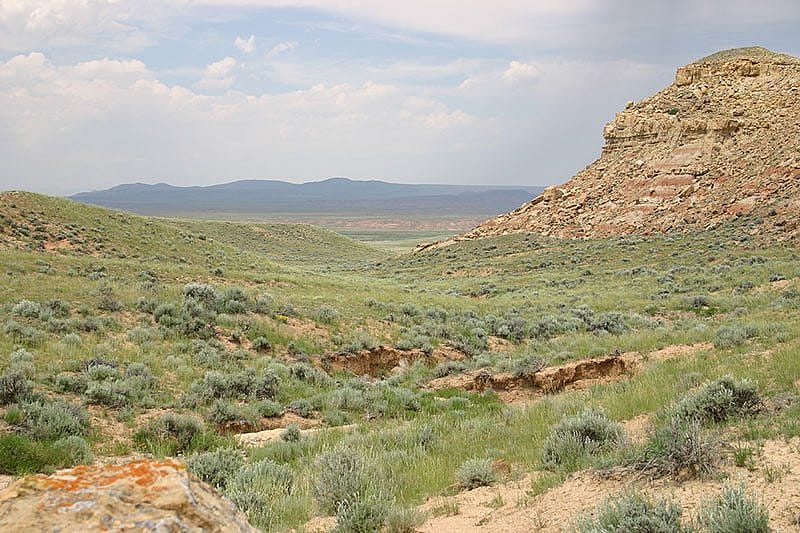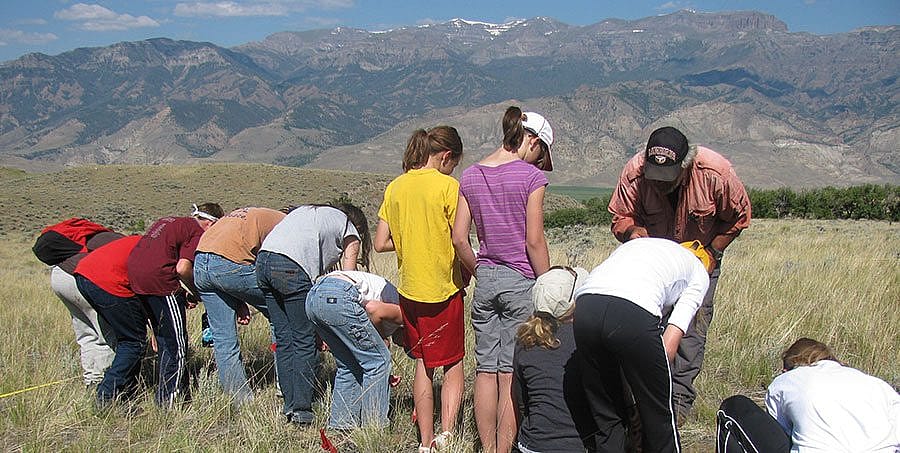
Camp Monaco Prize: Stimulating New Wildlife Conservation Strategies for the 21st Century – Points West Online
Originally published in Points West magazine
Spring 2013
Camp Monaco Prize: Stimulating New Wildlife Conservation Strategies for the 21st Century
By Dr. Charles R. Preston
“It’s obvious that the key problem facing humanity in the coming century is how to bring a better quality of life—for 8 billion or more people—without wrecking the environment entirely in the attempt.” – E.O. Wilson
As human population has increased, our world’s native biodiversity—its vast array of wildlife species and the natural processes that support and sustain them—has declined. In recent decades, both the scientific community and the general public have become more aware of the unifying concept of biodiversity and the importance of biodiversity conservation to human well-being.
The loss of biological diversity carries profound implications for ecosystem function, human health, economies, quality of life, and spiritual values. In light of the consequences of biodiversity decline, it is critical to develop new platforms for innovation in research and create working partnerships to expand science communication on biodiversity and its conservation. This new approach must recognize people as a part of nature rather than apart from nature.
Traditional conservation efforts have focused on setting aside and maintaining core refuges to protect and conserve biodiversity. But it is becoming increasingly apparent that the world’s protected national parks and preserves alone can neither contain nor sustain viable populations of plants and animals—especially large, wide-ranging wildlife that are often keystones to ecosystem integrity. These traditional refuges are fast becoming disconnected and ecologically-challenged islands in a sea of human-altered landscapes, and efforts to conserve wide-ranging wildlife often come into conflict with human economic and social interests. It is time for a new approach to conservation that recognizes the need to bridge geopolitical, cultural, and subject boundaries to ensure the long-term sustainability of native biodiversity together with robust human economic and social health.
Thinking beyond traditional boundaries
“It is in this context—in the need for more healthy communities—that we can most profitably collect and discuss our ideas about land stewardship across boundaries…our challenges are many, as we endeavor collectively to tend a land that is so much bigger than we are and so much beyond our ability to understand.” – Eric T. Freyfogle
Wildlife requirements and ecosystem integrity do not conform to political boundaries. Therefore, instead of focusing only on isolated areas protected by a single administrative agency, biodiversity conservation is necessarily changing to consider whole, multijurisdictional landscapes. In so doing, users can accommodate both human advancement and intact, healthy ecosystems.
The human element of this equation is often left out, as biological scientists usually focus only on wildlife species requirements beyond the human context. To develop effective, long-term biodiversity conservation strategies and common sense resource management for all stakeholders, it is critical to understand the economic and social impacts of biodiversity conservation and loss.
It is also important to recognize private landowners as key stakeholders in the twenty-first century and beyond. Addressing the challenges of biodiversity conservation across geopolitical, cultural, and subject boundaries requires sound knowledge about both the biological and socioeconomic environments. Regional models are also needed to explore a new trans-boundary biodiversity conservation approach that combines research, education, and stakeholder involvement. Because of its unique assets, global significance in biodiversity conservation, multijurisdictional landscapes, and transboundary conflicts, the Greater Yellowstone Ecosystem is an ideal model.
The Greater Yellowstone ecosystem as model
“The Greater Yellowstone Ecosystem is more than an assemblage of aesthetic wonders. It has no definite boundaries, and yet it is bound by its ecological unity or cohesiveness.” – Duncan T. Patten
As human presence increases, and traditional cultures, economies, and land uses give way to newly emerging human activities, lifestyles, and economies, conservation conflicts increase. Conflicts existing in Yellowstone and Grand Teton National Parks and adjacent landscapes are representative of conflicts in other globally significant conservation sites.
As the world’s first national park, Yellowstone is an international icon for biodiversity and natural resources conservation. It is revered the world over for its scenic beauty, abundant and charismatic wildlife, and unparalleled geothermal features. Yet, it has become obvious that Yellowstone and Grand Teton National Parks are not islands unto themselves capable of sustaining these treasures indefinitely. As with other nature reserves around the world, land management practices and human activities adjacent to Yellowstone greatly influence the wildlife and processes within. Similarly, management inside the park (e.g., wolf reintroduction, maintenance of natural wildfire regimes) affects land use and economies far beyond its boundaries.
For these reasons, Yellowstone National Park is now viewed as the core of a much larger surrounding area, usually termed the Greater Yellowstone Ecosystem. This fourteen to eighteen million-acre area encompasses portions of three states and crosses numerous private, tribal, municipal, state, and federal land management jurisdictions, including portions of six national forests managed for multiple use. Each of these private and public land management authorities is an important stakeholder and powerful force for shaping the future. Just as Yellowstone National Park served as a global model for conservation through the last century, the Greater Yellowstone Ecosystem serves as a twenty-first-century model to understand and improve biodiversity conservation where nature’s boundaries overlap our growing human presence in wild land interface landscapes.
A new partnership to identify new conservation strategies
“If we are together, nothing is impossible. If we are divided, all will fail.” – Winston Churchill
The [Buffalo Bill Center of the West]’s Draper Natural History Museum, the University of Wyoming’s Biodiversity Institute, and the Prince Albert II of Monaco Foundation-USA are partnering to offer a $100,000 grant in support of scientific research and problem-solving. Titled the “Camp Monaco Prize,” the purpose of the open competition is to stimulate cutting-edge research to help conserve biological diversity in the Greater Yellowstone Ecosystem alongside the region’s important and varied economic and social interests. The challenges to conservation in Greater Yellowstone are representative of conservation challenges around the world, and therefore the implications of research conducted here are global. These challenges require innovative strategies that cross both disciplinary and jurisdictional boundaries.
The name of the award commemorates the back country camp visited by Prince Albert I of Monaco on his historic trip to Greater Yellowstone’s backcountry in 1913.
The partners for the Camp Monaco Prize have issued a call for biodiversity research proposals to all interested parties through the world’s leading scientific organizations. We believe that the most significant advances in biodiversity conservation will spring from the creation and synthesis of information gained through interdisciplinary (economic and social, as well as biological) research that addresses the trans-boundary stewardship challenges inherent in the Greater Yellowstone Ecosystem and other coupled human and natural systems throughout the world.
We also believe that an informed citizenry is more likely to provide important input and support to sound stewardship strategies. Therefore, projects that integrate public outreach activities and multiple stakeholder involvement with scientific research activities are strongly encouraged. Our ultimate objective is to foster concrete actions to safeguard biodiversity in conjunction with continued human social and economic development.
The Camp Monaco Prize jury is in place to review submissions and to select the winning proposal. The jury includes a highly distinguished, international assemblage of scientists, scholars, public officials, and public outreach professionals. The prize was awarded at the Center’s annual Patrons Ball on September 21, 2013, in the presence of H.S.H. Prince Albert II of Monaco. The Fall/Winter 2013 issue of Points West announced the winner…
Yale researcher and National Geographic Young Explorer awarded first ever Monaco prize
With $100,000 of prize money in their pockets, Yale researcher Dr. Arthur Middleton and National Geographic Young Explorer photographer Joe Riis are set to begin an extraordinary project to study the movements, productivity, and conservation of Greater Yellowstone’s migratory elk; how climate influences that migration; and the potential for long-term monitoring of migration via camera-trapping. Plans include publications, a public webcam to share live elk migration footage at key bottleneck areas, a documentary film, and a photography archive in support of science, education, and outreach.
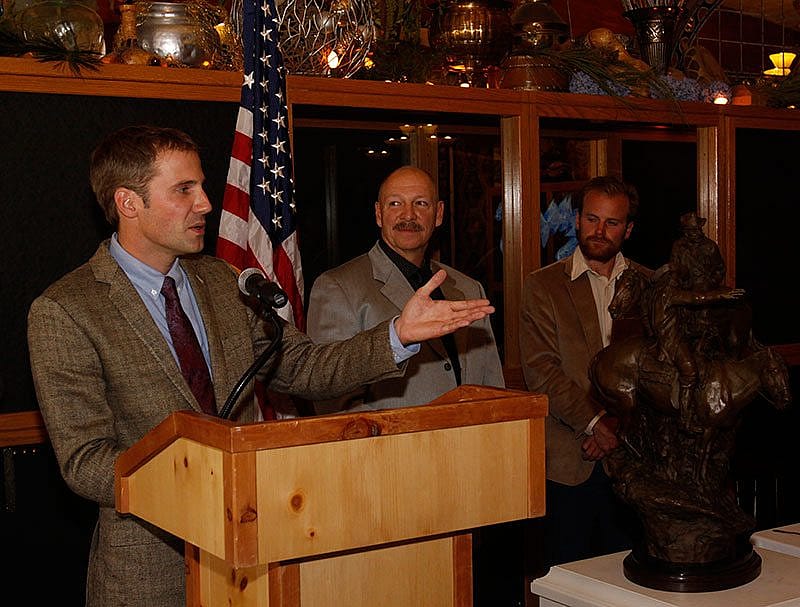
The $100,000 Camp Monaco Prize that supports the Middleton/Riis research is an initiative of the Center’s Draper Natural History Museum, the University of Wyoming’s Biodiversity Institute, and the Prince Albert II of Monaco Foundation-USA. The Prize is named for a hunting camp established near Yellowstone Park in 1913 by Prince Albert I of Monaco and William F. “Buffalo Bill” Cody.
The core partners
The Draper Natural History Museum is the natural science division of the [Buffalo Bill Center of the West]. Opened in 2002 as the first major natural history museum established in and for the twenty-first century, the Draper Museum strives to increase understanding and appreciation for the relationships binding nature and humans in the American West, particularly the Greater Yellowstone region. We pursue this goal through an interconnected suite of activities including scientific research, collections development, public outreach, and more than forty thousand square-feet of highly immersive exhibits on the ecology of Greater Yellowstone, including Yellowstone wildlife.
The University of Wyoming’s Biodiversity Institute, a division of the Haub School of Environment and Natural Resources, seeks to promote research, education, and outreach concerning the study of living organisms in Wyoming and beyond. The university already has a wealth of resources on campus in the form of biodiversity scholars, research, and academic programs. The Institute brings into common action the considerable resources on biodiversity scholarship already present at the university and makes them widely accessible to Wyoming’s citizens, and particularly University of Wyoming’s students.
The Prince Albert II of Monaco Foundation was established in 2006 by His Serene Highness Prince Albert II to continue the Principality of Monaco’s legacy of environmental stewardship and its commitment to conserve the world’s natural environment. The Foundation supports sustainable and ethical projects especially in the Mediterranean Basin, the Polar regions, and the world’s least developed countries. Its focus is on three main challenges: climate change, combating the loss of biodiversity, and water management. It has opened chapters in France, Switzerland, the United Kingdom, Italy, Germany, Canada, and, in 2008, the United States. Since its inception, more than one hundred projects have benefited from Foundation grants totaling more than $23 million.
Post 002
Written By
Nancy McClure
Nancy now does Grants & Foundations Relations for the Center of the West's Development Department, but was formerly the Content Producer for the Center's Public Relations Department, where her work included writing and updating website content, publicizing events, copy editing, working with images, and producing the e-newsletter Western Wire. Her current job is seeking and applying for funding from government grants and private foundations. In her spare time, Nancy enjoys photography, reading, flower gardening, and playing the flute.
